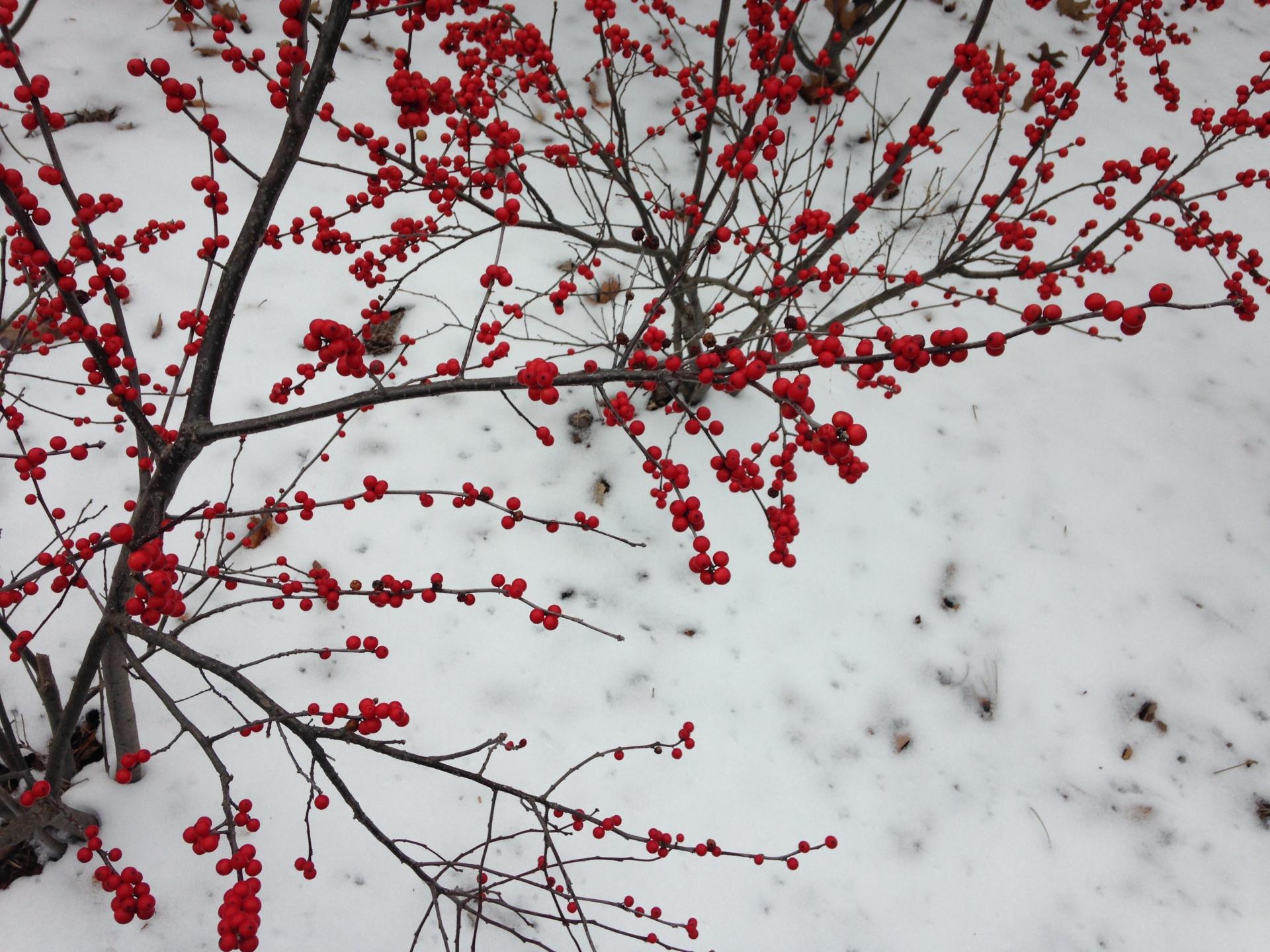You are here
Be A Better Gardener: What About Winterberry?
Be A Better Gardener: What About Winterberry?
by Thomas Christopher
Garden pundits speak of “the four-season garden,” promoting the need to plant for wintertime color. The most abundant color source of this season in my corner of New England, however, plants itself. It’s the winterberry holly (Ilex verticillata). Native to wetlands and moist soils throughout the eastern half of the United States, the winterberry is something of an anomaly among hollies in that it isn’t evergreen. Instead, its dark green, elliptical leaves turn yellow in the fall and drop from the twigs, which only enhances the display of its innumerable colorful berries, which can turn the shrubs into a blaze of scarlet.
The wild-type winterberries commonly form large, rangy shrubs that may reach a height of ten to twelve feet, with a similar spread. In the wild, winterberry commonly spreads by suckers, forming large thickets. I’ve not heard of similar aggressive tendencies when the winterberry is planted in the garden, where it flourishes in slightly acidic, organic-rich, medium-to-moist soils in full sun to partial shade.
Wild-type winterberries claim a considerable space and are best suited for the background of the garden, maybe at a woodland edge, but plant breeders have developed a number of more compact strains that also bear unusually heavy crops of fruit. These are a favorite food for a variety of birds such as wood thrushes, cedar waxwings, and catbirds that fuel up with these fruits before and during their migration south. Because winterberry fruits persist on the bushes’ branches well into winter, they are also a mainstay for robins, and other birds who overwinter in our region.
If you want your winterberries to bear fruit, you must plant both male and female specimens (one male can pollinate up to five females). In addition, you must make sure that the strains of males and females you select are ones that bloom at the same time. ‘Red Sprite,’ for example, a female winterberry cultivar that makes a mounded shrub only three to five feet high, is early blooming and should be planted with a similarly early blooming male such as ‘Jim Dandy’ (five feet tall with a slightly wider spread). ‘Winter Red,’ an upright female that grows to a height of six to nine feet, is later blooming and should be matched with a late-blooming male such as ‘Southern Gentleman' (six to nine feet wide and tall). Gardeners who crave variety will find it in the female varieties: ‘Winter Gold,’ which grows to a height and width of five to eight feet and bears yellow berries, or ‘Aurantiaca,’ (five feet tall and wide), which bears orange fruit. Again, it is essential to match these females with the appropriate male: ‘Winter Gold’ is compatible with ‘Southern Gentleman’ whereas ‘Aurantiaca’ is better pollinated by ‘Jim Dandy’. This list of winterberry cultivars is just a taste of what is available, and new varieties of winterberries are continually being introduced into the nursery trade, expanding the number of alternatives.
The flowers of these shrubs, which are borne in late spring are small and white and do not make much of a show. Winterberries may be planted in spring or fall. They are ideal for any low-lying or damp spots in your garden. When planted in drier soils, these plants need regular irrigation during dry spells. If you find it necessary to prune your winterberries, you should do so in early spring before the new growth appears, as the flowers are borne on the new growth and to wait and cut this back ensures a smaller crop of berries.
Be-a-Better-Gardener is a community service of Berkshire Botanical Garden, located in Stockbridge, Mass. Its mission, to provide knowledge of gardening and the environment through a diverse range of classes and programs, informs and inspires thousands of students and visitors each year. Thomas Christopher is a volunteer at Berkshire Botanical Garden and is the author or co-author of more than a dozen books, including Nature into Art and The Gardens of Wave Hill (Timber Press, 2019). He is the 2021 Garden Club of America's National Medalist for Literature, a distinction reserved to recognize those who have left a profound and lasting impact on issues that are most important to the GCA. Christopher’s companion broadcast to this column, Growing Greener, streams on WESUFM.org, Pacifica Radio and NPR and is available at berkshirebotanical.org/growinggreener.
Help Our Garden Grow!
Your donation helps us to educate and inspire visitors of all ages on the art and science of gardening and the preservation of our environment.
All Donations are 100 percent tax deductible.


